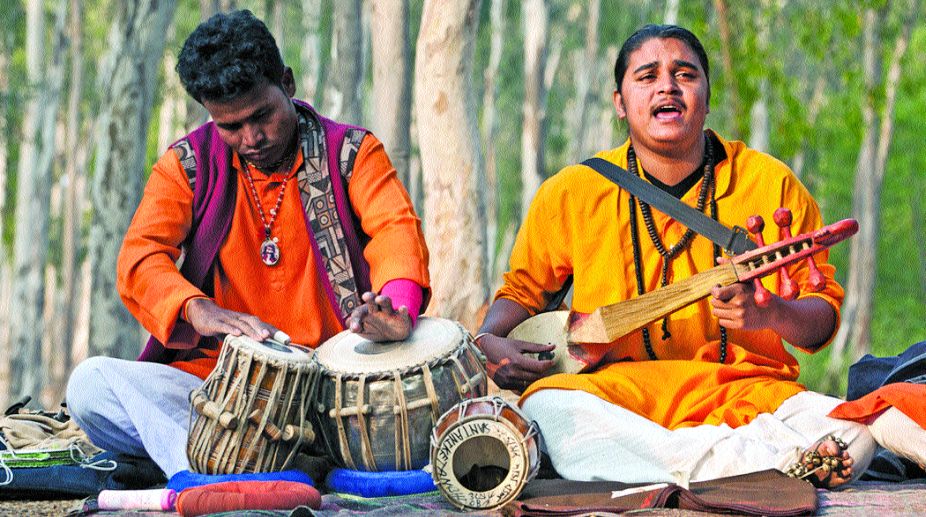The surroundings of a rural environment, “with the melody of birds, the whisper of groves and the murmur of rivulets,” as defined by English writer, Samuel Johnson, articulate how these charming features of the countryside, have inspired composers to create the gentle rhythm of what we value in folk music, a lot of which has lived on for centuries here in India.
India is a land of cultural diversities and every region has its own form of folk music, interpreting a representation of that particular countryside. It is a combination of beliefs and traditions of the area, be it Bengal, Rajasthan, Himachal Pradesh or the rural belt of Punjab. This repertoire of differing types of folk music, all in one country, is incredible.
Advertisement
Bengali folk music has few instruments and the music was prevalent before the language was formed. Ancient pictures were depicted of musicians, proving the presence of music in Bengal from the Middle Ages.
Its folk music received renewed interest in the 20th century, and it continued to circulate amid religious rituals and daily life all across the history of Bengal.
Interestingly, the music of this region has various identities, and each name signifies a festival, which alone elucidates the time of a season; for example the harvesting season or a period of time when a religious festival is celebrated. Bhatiali, from bhati (land of the river bed) is relevant to Eastern Bengal; Jan-Gan narrates issues of Muharram, emotions, or warfare.
Similarly Sarigan is a song for those working in paddy fields, or when rowing a boat; Baulgan, reflecting nomads; Bhaolaia, a festive song of North Bengal, and Jhumur, folk music of Rarh Bengal, a region that is between the Chota Nagpur Plateau in the west and the Ganges Delta in the east.
Rural Bengal is about its endless paddy fields, rivulets, and forests that have in their own way influenced musicians and writers. Tagore’s writing even extolled the butterfly that flies to spread “mirth from leaf to leaf”. His poem on a small river, “Our little river flows in graceful loops…” inspired musicians to compose tunes reflecting the quietude of rural life.
The intrinsic difference between classical and folk music is that classical music requires students to devote themselves to perfect the form.
On the other hand, folk music is learnt from childhood, with a familiar beat, rhythm and harmony. Notwithstanding the use of the sitar or sarod, when folk music is played, the authentic accompaniments include clay pots, empty coconut shells and instruments fabricated with bamboo or cane.
We must not ignore the importance of the flute or bansuri, which is popular in folk music with its melodious and expressive sound. In Carnatic folk and in South India the flute is known as the venu. The flute is an ancient instrument of the sub-continent and was called the tunava in Vedic texts and has been written about in the Sanskrit texts of the Natya Shashtra.
Raga Unveiled, a film by Gita Desai, traces the phenomenal spectrum of India’s different types of music. This film has researched how our musicians can improvise when creating compositions. By improvisation a musician is actually awakening streams of consciousness within themselves, thus exploring the many paths of music.
Our country’s music has continued, over the passage of time, and folk music is a significant dimension of this harmony. Much of our folk music has been inspired by life in villages, and it resonates with all that exists within those realms.











